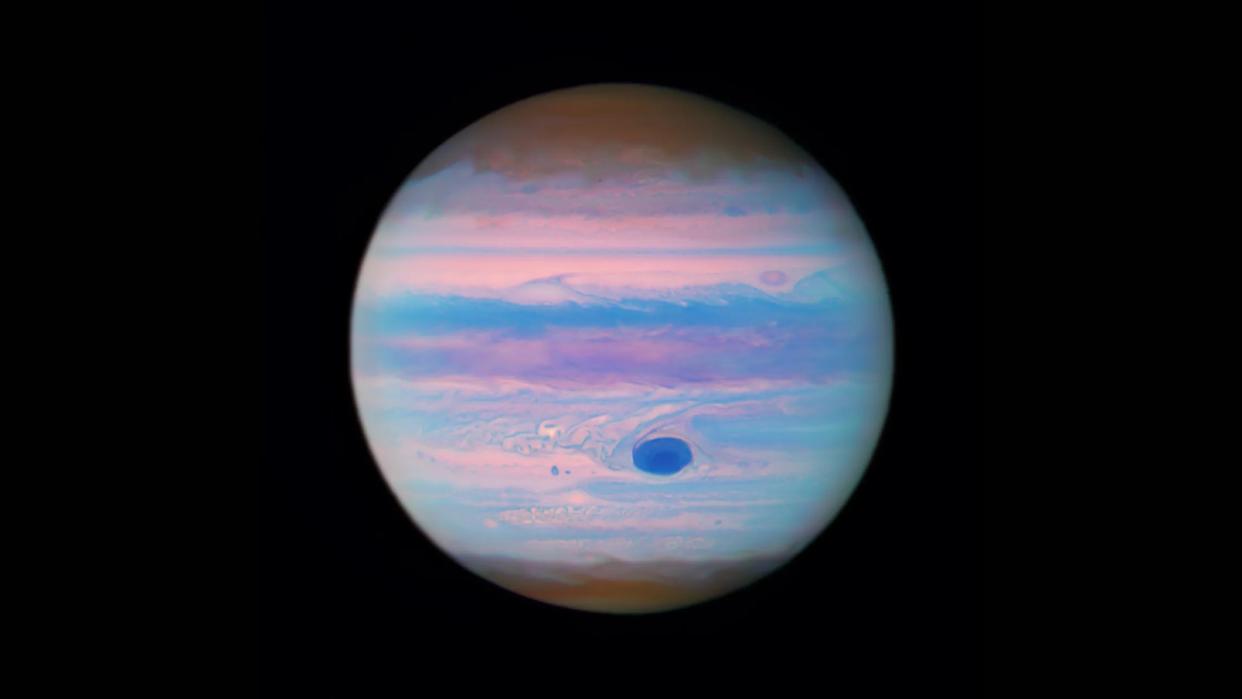Jupiter's Great Red Spot turns blue in new ultraviolet view from Hubble Telescope (photo)

Viewing Jupiter in ultraviolet light really brings out the planet's storms.
The Hubble Space Telescope recently snapped an ultraviolet image of the gas giant, offering a stunning false-color look at the planet's turbulent atmosphere. Prominent in the image is Jupiter's Great Red Spot. It is especially visible in this picture because haze particles high in Jupiter's atmosphere — which are particularly concentrated above the giant, centuries-old storm — are very good at absorbing ultraviolet light.
On the other hand, the clouds in Jupiter's polar regions are not as prominent, since the atmosphere absorbs less ultraviolet there. This may be because particles in the atmosphere there have different sizes, compositions, or altitudes than those at lower latitudes.
Related: Stunning new images of Jupiter reveal atmosphere details in different light (video)
Hubble created this image by taking images of Jupiter with three different filters, collecting data across three different sets of ultraviolet wavelengths. Humans obviously cannot see ultraviolet light, so astronomers gave each set its own color: One in blue, a second in green and a third in red.
Related stories:
— Comet Shoemaker-Levy 9's Epic Crash with Jupiter in Pictures
— NASA's Juno probe detects organic compounds on huge Jupiter moon Ganymede
— See Jupiter shine bright during the Taurid meteor shower
The image, and the data used to make it, will help scientists quite literally peel away Jupiter's atmosphere and look within the upper layers of the planet's interior. Astronomers want to use that data to map water clouds deep in Jupiter's atmosphere, which might help understand the shapes and structures of those clouds.
Astronomers have been able to turn Hubble on Jupiter for decades. Famously, Hubble watched shrapnel from the comet Shoemaker-Levy crash into the gas giant's surface in 1994.
And NASA's other revolutionary space-based instrument, the James Webb Space Telescope, has also turned its gaze towards Jupiter recently, revealing jet streams in the planet's atmosphere and providing gorgeous views of our solar system's largest planet.

